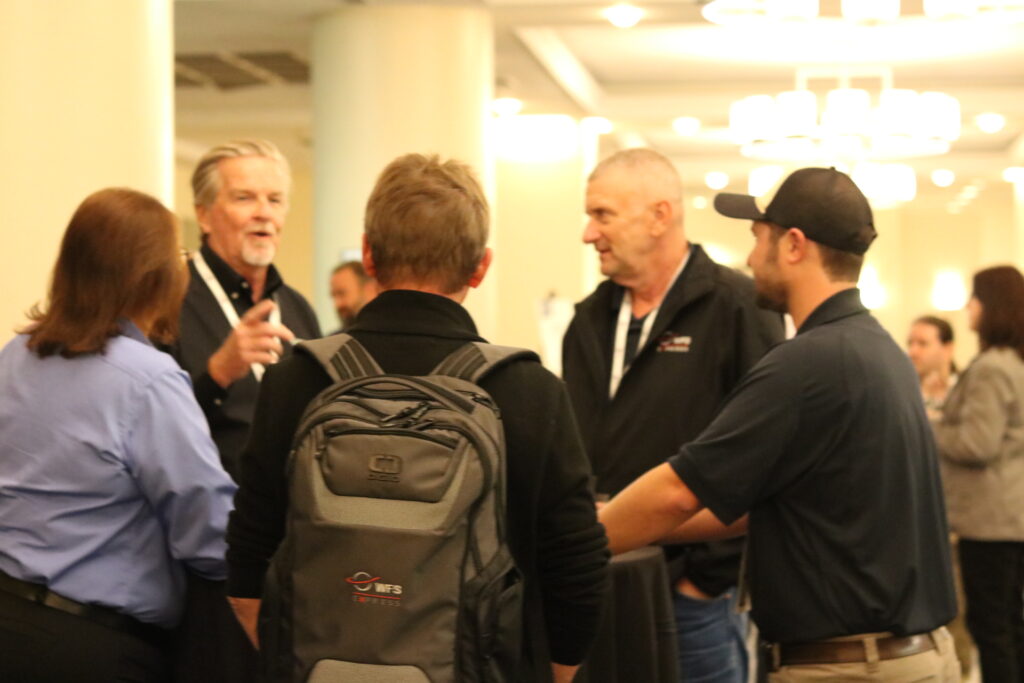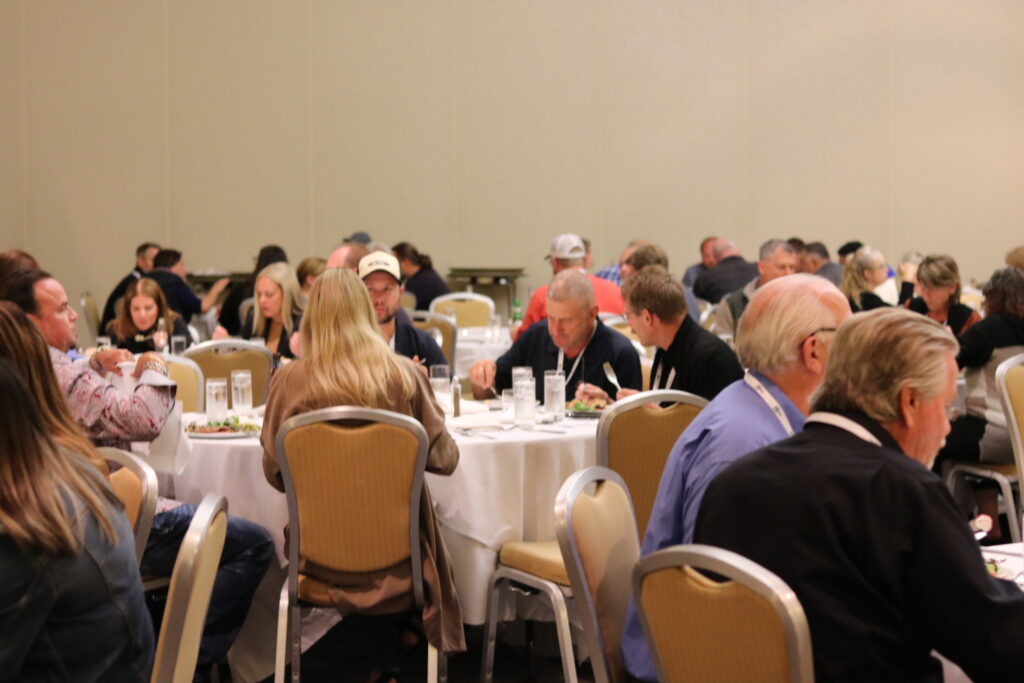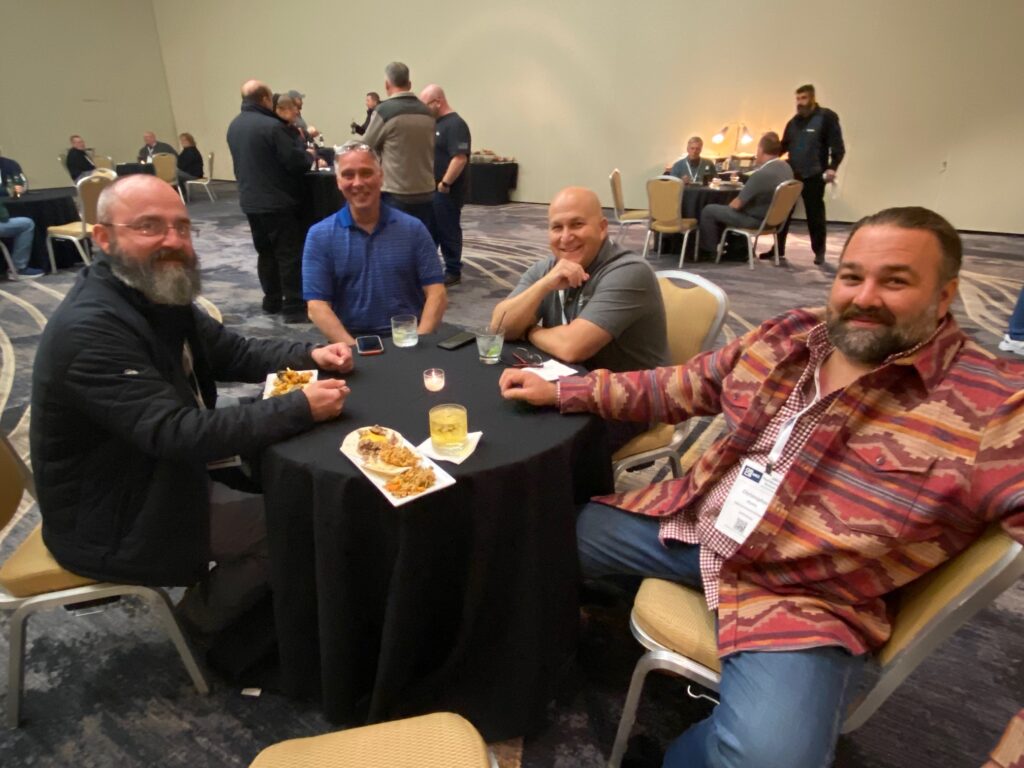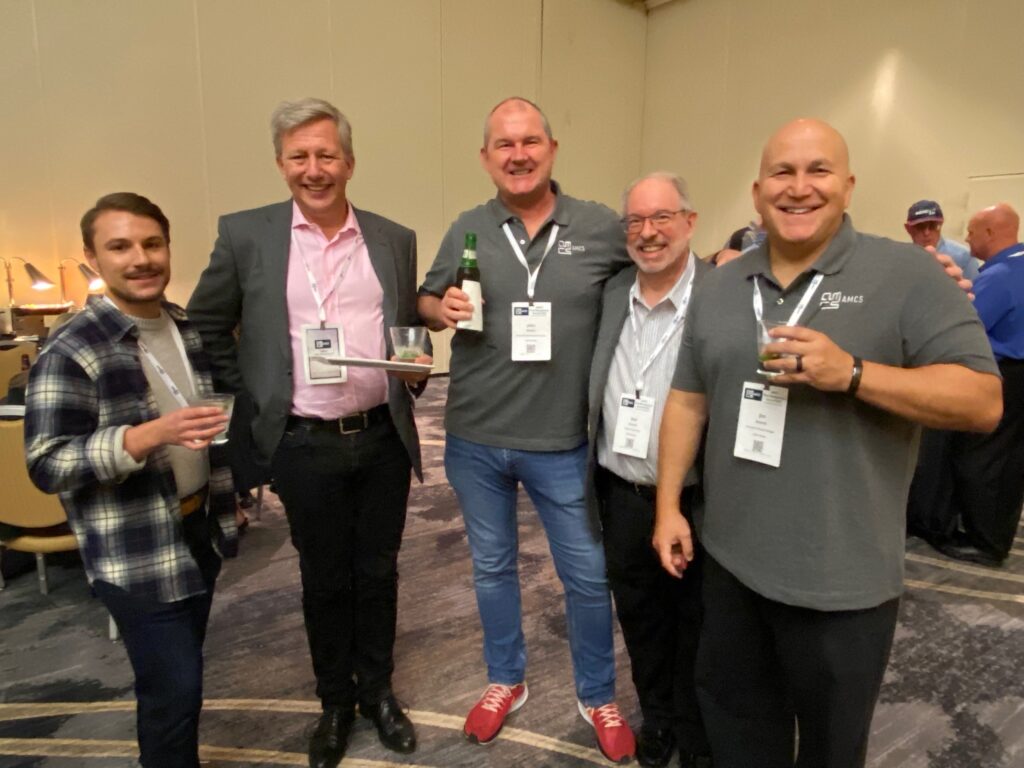During the week of October 3rd in Philadelphia, PA, AMCS hosted their annual Fleet Management Summit, a three-day long, all-inclusive event for AMCS customers. The conference featured product and industry updates, networking opportunities, training, best practice discussions and solution focused breakout sessions. The event was also part of the AMCS Inspire series designed to provide thought leadership in our industries, through customer insights, inspiration and innovation.
“AMCS has been in a period of extraordinary growth and at our Fleet Management Summit, we offer a blended agenda that focuses on training and networking. It is exciting because our breakout speakers are discussion leaders rather than presenters, and our user community is willing to share with each other the creative ways they that use our solutions,” says Bob Hausler of AMCS Product Marketing. “The conference offers a chance to ask questions, talk about challenges and exchange ideas. We want to foster that bond between AMCS and our customers as well as other attendees. It’s a win-win for AMCS and our customers; we get great insight to our customers’ business challenges from the dialog at this event and it feeds right into the company’s roadmap for the future.”

A Packed Agenda
The first day of the event opened with a general session presented by AMCS leadership. Michael Winton, AMCS President, North America, shared the company’s mission and values, followed by Lasse Jiborn, Commercial Director Intelligent Optimization / Product Manager TMS, who covered the overall AMCS solution strategy, as well as the latest innovations from AMCS in the Transport area. After this, the packed agenda transitioned to individual, tailored breakout sessions, as Hausler explained, “It’s a very ambitious schedule. Since our attendees range from the shop to the boardroom, we try to ensure that there is a mix of topics and intensity (basic/intermediate/expert) in every timeslot. We run six sessions in parallel for a total of 72 breakouts over the three days.”
Conference attendees also have the option to take advantage of the AMCS UX Experience Lab at the event. These kiosks are setup for 1:1 sessions with AMCS experts; users can get a quick answer to a how-to question or “kick the tires” on a product or feature they are considering.
Dynamic Discussions
The second day of the summit kicked off with keynote speaker, Jack Levis, who spent 40 years with UPS, discussed fleet strategies with the audience and shared key areas that management should invest in, including understanding analytics, building tools within a process, synchronizing the virtual and physical information, planning deployment early, embracing change, and optimizing your operation. He emphasized investing in people and networking with colleagues to find out what is going on within the company, to foster an atmosphere of learning from others, whilst sharing and understanding ongoing challenges. It was a collaborative, dynamic session with the audience engaging with Jack to ask questions about how certain strategies would help their own operations.

There were several breakout sessions throughout the second day that focused on the waste and recycling industry. The first one was a round table discussion with John Davis of AMCS and Harold Graves from Stella Environmental who started by asking audience members how things look today versus last year—How is your equipment looking? New types of diagnostic equipment in MRFs? Recycling status? Fiber vs. plastics? Etc. They wanted to hear from those in attendance about their current challenges. It was an interesting discussion since many of them pointed out that it had been difficult getting the parts they need. They said that although getting aftermarket parts was bad, it has leveled off and tires are now becoming an issue, but vendors have worked with them, they have communicated with suppliers, and they are looking at other avenues to get parts in. The reality is that there are less spares. They will not get equipment they ordered until 2023, so running older equipment is common and parts are spare—it is an ugly cycle. To combat this problem, suggestions from the audience included going right to manufacturer, using direct customer portals to find the part and shipping it from another location. For example, with the Dossier tool, you can see every storeroom and every part at every location so you can share information and exchange parts as available (especially older parts or ones that are not used anymore). In addition, John and Harold stressed the need to make sure you are communicating with your mechanic, especially when they are involved with ordering parts. During the same time slot, attendees from other industries have similar focused sessions – there are seven in all – Waste & Recycling; Trucking & Intermodal; Government; Utilities, Infrastructure, & Construction; Transit, School, & Charter Bus; Food & Beverage; and Private Fleet.
The “AMCS Platform for Waste/Recycling” session in the afternoon featured Matt Monroe, Senior Sales Engineer for AMCS, giving a high-level overview of our platform solution that is built specifically for the waste hauler process, including key features on Service Setup, Route Management, Invoice Payments, Invoice Inquiries, Service Inquiries, and fielding Complaints. He also touched on the major business challenges in the industry:
- Account Management
- Customer Engagement
- Route Management (especially unbalanced routes)
- Driver Logistics
- Scale
- Accounting and Payments
- Reporting and Analytics
After going over the features of the platform and challenges, he wanted to hear about concerns from attendees opening it up to a dynamic discussion; with questions posed about things that could be changed, or how to use the features with customization and automation, as well as real-world examples.
“Driver and Technician Safety and Satisfaction” held by Matt Monroe and John Walborn, was an engaging conversation on not only safety practices in your shop, but also driver safety as well. Some of the current issues are:
- Industry struggle with finding new drivers,
- Cost of training new drivers = (CDL between $3,000 to $7,000. It is a significant investment, cost for organization $12,000+)
- Time it takes to get full independent
- How to retain qualified drivers and reduce churn (many older drivers are retiring)
The waste and recycling industry is very competitive. Is equipment up to speed? Does equipment break down frequently, so it does not effectively let drivers do their job? If drivers are behind, they must deal with angry customers, affected paychecks, etc. If a driver feels s/he will not be successful in their job, it doesn’t matter how much money you offer, if they feel like they will not be able to obtain it, then they will not change. The top driver safety violations are:
- Speeding
- Failure to obey traffic laws
- Failure to use seat belt
- Hours of services violations
- Use of cellphone while driving
- Mechanical issues, out of compliance equipment
Matt and John emphasized the need to analyze what drivers are doing in real-time and address problems as necessary when alerted (ex: speeding, harsh braking, cornering). Preventing one incident pays for the software solution and everything that would have gone along with it. If you can’t see it, you can’t manage it. So, how can technology help? It enforces rules and consequences, setting a precedence for everyone ese. Don’t assume that a driver would not do something incorrect, (like getting out of the seat while driving, using cellphone, etc.). They also touched on concerns that drivers have with regards to cameras being on all the time in the truck, including setting parameters for what information is being brought back. Also, it is important to let the drivers know the importance of the equipment for their safety as well as it is protecting the community. It is used in confirming an incident as well. Once they learn the value, they will start embracing it.

Finally, the last waste and recycling session of the day focused on AMCS Automated Contamination Management, covering some of the features of AMCS Vision AI, capturing and automating contamination information without driver interaction. The camera is in hopper, so as material is being dumped, you can see what contamination is going into the truck; contaminated material can also be viewed in the back of the truck. This material identification gives companies awareness for hotspots and which areas need to be targeted for additional education on separating their trash. Vision AI offers
- Automation at Scale (imperative to a digital age, does not interfere with day-to-day production but enough to give actionable results)
- Accuracy/Repeatability
- Insights (see and analyze trends, drive initiatives in real world)
- Actionable Information (take back real data to the violators and start changing behavior, take corrective action)
AMCS Vision AI can also automate the value chain at the MRF—the cleaner the material at the field, the better it is to process, giving the material higher resource quality. There is a Vision AI Analytics Portal with Video Stream, GPS, Event ID, and Vehicle ID. It can be integrated as standalone equipment or integrated with AMCS solution. AMCS Vision AI can be set to the specific waste that you are handling in MRFs, landfills and organics in order to:
- Reduce contamination costs
- Better environmental outcomes
- Enhance staff safety
- Increase public trust and loyalty

A Great One-On-One Experience
The final day of the AMCS Fleet Management Summit consisted of the final three breakout timeslots followed by an informal lunch. AMCS organizers shared that the program structure has been honed over the years with significant input from the user community. For example, with the third day being only held in the morning, this allows attendees to get three more sessions in, but still travel home the same day.
AMCS’ Winton summed up the event with, “We’ve been looking for more opportunities to have user conferences and we’ve seen how well they are received by our customers and the energy throughout the week. Our customers love to meet the people they speak with on the phone and get the one-on-one experience. This year, we are examining the takeaways to see what this will look like in the future and how we can grow this excellent event.”
